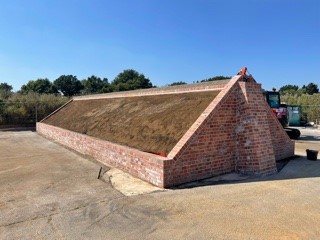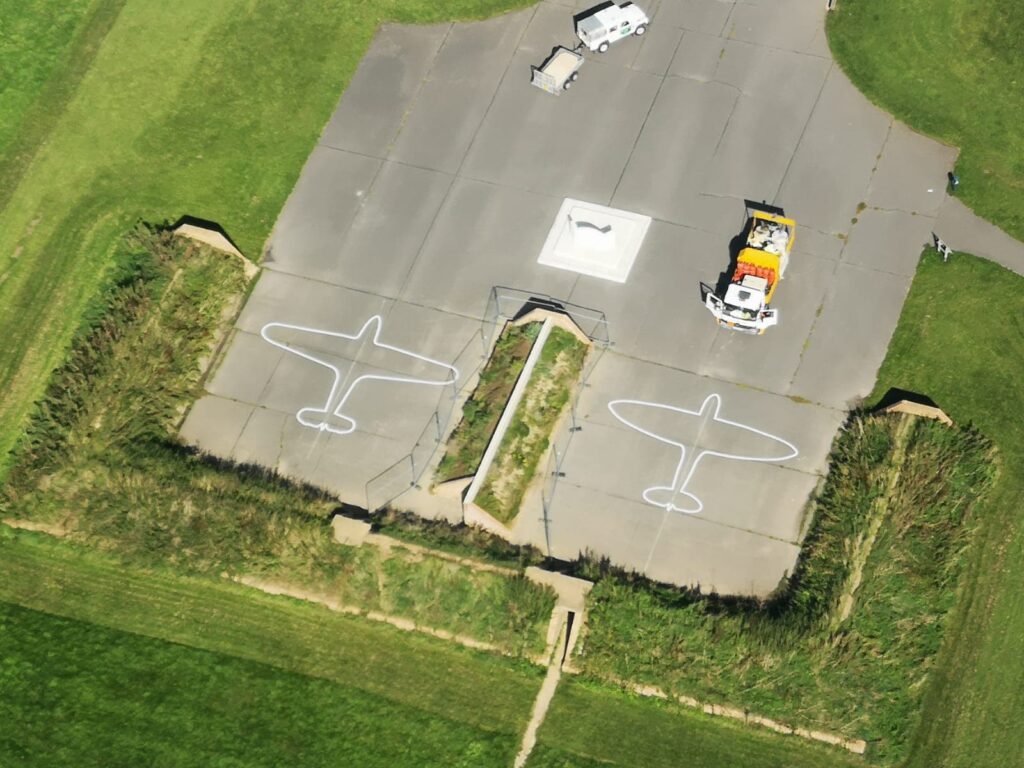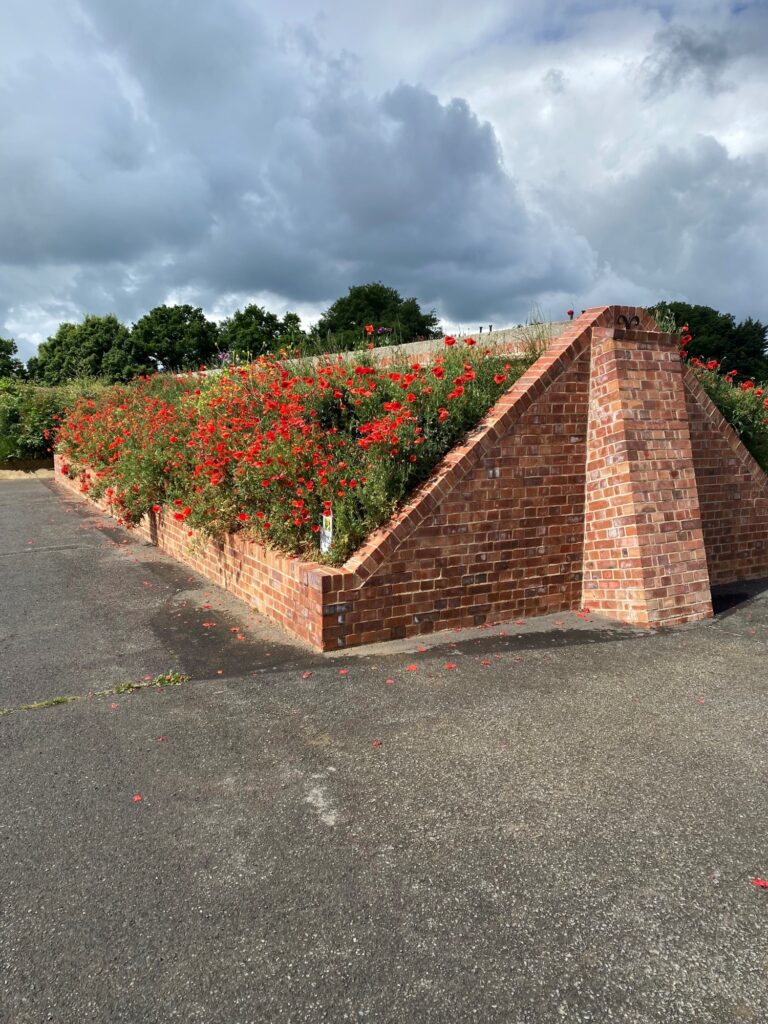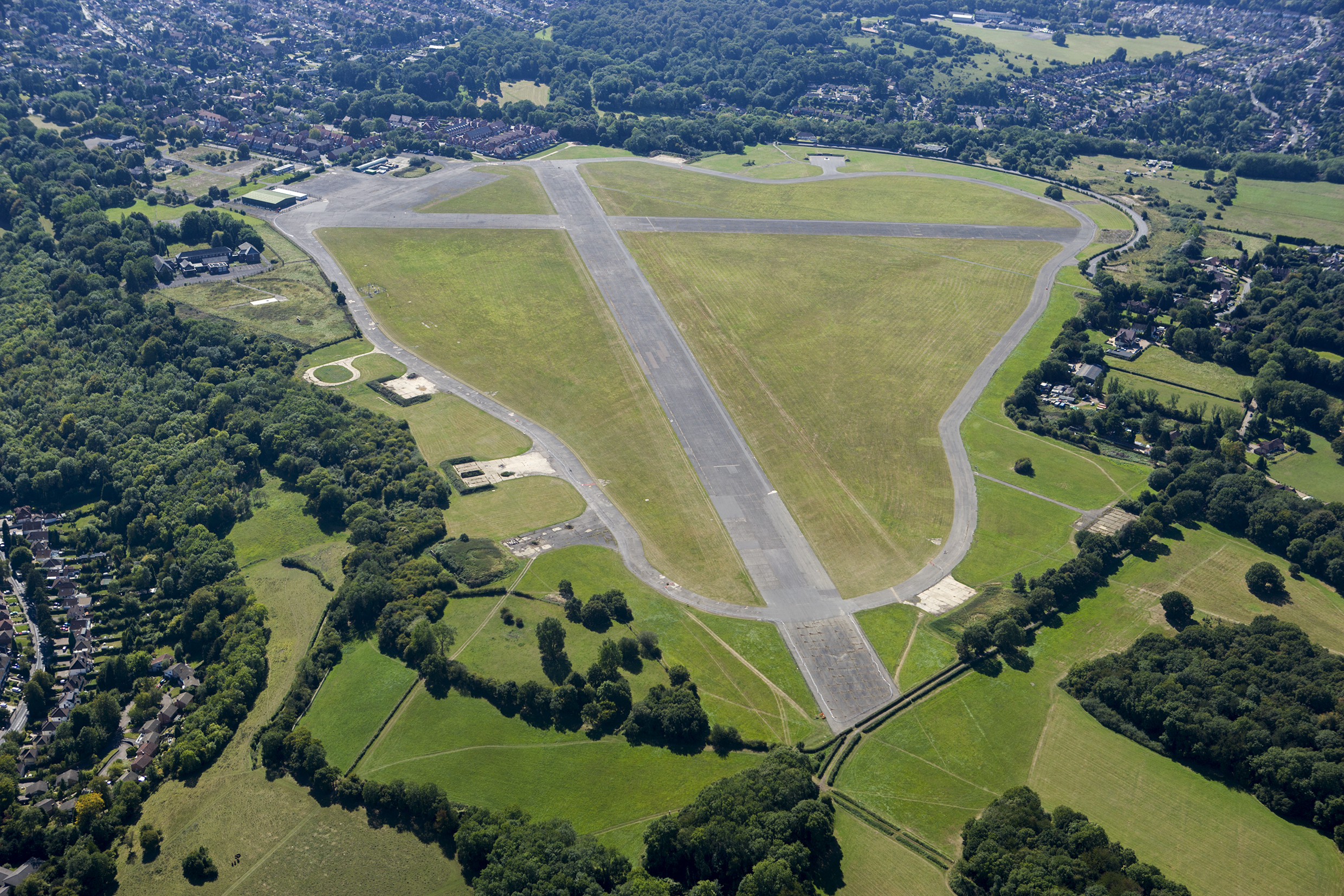An ambitious conservation and restoration project at a key World War Two heritage site is finally complete and provides a fitting monument to the sacrifice of those who served and died there.
The Kenley Revival Project, at Kenley Airfield, started six years ago, and has since taught thousands of people about the crucial role the airfield played during the ‘Battle of Britain’ and ensuing war years, whilst doing vital works to conserve and bring back to life parts of the site.
The project was designed to provide opportunities for people to learn about the WWII heritage of Kenley Airfield and to conserve Kenley’s rare WWII structures.
The eight Fighter Blast Pens on the site, built as temporary structures to protect the Spitfires and Hurricanes operating at the airfield from attack by the German Airforce, had deteriorated over the decades due to exposure to the elements. Innovative conservation techniques to conserve structures that were originally expected to have a very short life span, were developed as part of the project and will be used to inform other projects around the UK.
Work restoring these eight structures, which prior to 2017 were listed on the Heritage at Risk Register (HaRR) due to their deteriorating condition, is now complete after six years. Historic England have now removed the structures from the HaRR.
This project has focussed on conservation to protect the heritage assets and to provide site based information to enable visitors to better understand how the airfield looked and functioned during the war.
The £1.2m Kenley Revival Project – a partnership between the City of London Corporation, Kenley Airfield Friends Group and Historic England – received £881,000 from from the National Lottery Heritage Fund in 2015 to conserve the heritage of the most intact fighter airfield to have survived WWII.
19,166 people – including 7,430 school students –engaged directly with project through dedicated educational programmes and a full schedule of events on and off the site over the years.
Additionally, over 200 participants were able to get hands on with community archaeology digs that uncovered gun emplacements, a dispersal hut and several objects dating from WWII.
A new suite of signage that reflect the wing shapes of the fighter aircraft of the day, was installed to inform visitors (approximately 200,000 per annum) about the significance of the airfield and the vital role it played in protecting our nation during the Battle of Britain.
Those unable to visit the airfield can visit Kenley Revival’s website https://www.kenleyrevival.org/ to find oral histories, an archive of 227 items including photographs, and 218 online memorials to Kenley’s fallen.
Chairman of the City of London Corporation’s Epping Forest and Commons Committee, Ben Murphy , said:
“The Kenley Revival Project has connected a whole new audience with the story of Kenley and the crucial role it played at a time when our country’s future lay in the balance.
“As a result of this project the heritage assets will be in a better condition, better managed and better understood. The knowledge gained in the development and implementation of this philosophy will transcend the boundaries of Kenley Airfield to benefit other, similar projects.
“I am proud of the work of the City Corporation and its partners have done to protect this vital piece of our heritage for the future.”
The City of London Corporation, which protects the site as a charitable trust and manages Kenley Common, a Site of Importance for Nature Conservation (Metropolitan grade) for its grassland habitats. The site became part of the recently designated South London Downs National Nature Reserve in 2019.
Kenley Common surrounds Kenley Airfield which is owned by the Ministry of Defence and used by the Royal Air Force for glider training.
The City Corporation is proud to protect over 11,000 acres of open space in London and south east England – including Hampstead Heath and Burnham Beeches – and over 200 smaller ones in the Square Mile, investing over £38m a year.
They remove an estimated 16,000 tonnes of CO2 from the atmosphere every year, equivalent to 44% of the City Corporation’s annual carbon footprint.
These sites, most of which are charitable trusts, are run at little or no cost to the communities that they serve. They include important wildlife habitats, Special Areas of Conservation, Sites of Special Scientific Interest, and National Nature Reserves. They are protected from being built on by special legislation.



ENDS
Notes to Editors:
The City of London Corporation is the governing body of the Square Mile dedicated to a vibrant and thriving City, supporting a diverse and sustainable London within a globally-successful UK. www.cityoflondon.gov.uk
The Commons, comprising 4 separate, registered charities, relies on the public for income and donations to protect 800 hectares of outstanding environments attracting 2.5 million visits annually.
We receive more than £2.5m from the City of London Corporation to protect The Commons which stretch from Burnham Beeches and Stoke Common in Buckinghamshire to the borders of South London, Croydon and Surrey.
We now need to do more to protect these important sites for wildlife and visitors and include Sites of Special Scientific Interest, historic landscapes and scheduled monuments.
The City of London Corporation manages the Commons, which refers to: Burnham Beeches, Stoke Common, Ashtead Common, West Wickham and Coulsdon Commons, Farthing Downs, Kenley Common, Riddlesdown and Spring Park.
